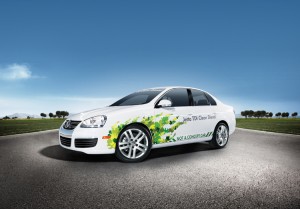When the Texas county that includes Houston sued Volkswagen over its diesel emissions scam last week, skeptics criticized the move as little more than a political cash grab. But a statistical analysis suggests that Harris County may have at least something of a legitimate claim.
According to the Environmental Protection Agency, VW used a so-called “defeat device,” software embedded in the computers used to control its 2.0-liter diesel engines, to help it pass government pollution tests. Otherwise, said the EPA, nearly 500,000 vehicles produced up to 40 times the allowable level of emissions such as smog-causing oxides of nitrogen.
And over the past seven years, since VW began fitting its cars with the suspect WA 189 diesel engine, that added pollution could have led to as many as 94 deaths, or anywhere from five to 20 annually, according to a study Carnegie Mellon University conducted for the Associated Press.
“Statistically, we can’t point out who died because of this policy, but some people have died or likely died as a result of this,” Carnegie Mellon environmental engineer professor Peter Adams told the AP.
(Congress to hold hearing on VW emissions scandal. Click Here for the latest.)
While all internal combustion engines create pollution, diesels are more difficult to treat, particularly when it comes to the production of both NOx and ultra-fine particulates, studies suggesting the sooty material can become lodged in the lungs, leading to a variety of cardio-pulmonary diseases.

Diesels are inherently dirty, though modern pollution control systems can clean them up - if used properly.
A decade ago, as regulators ramped up automotive emissions standards, it began to look like diesels might be legislated out of the American market. But manufacturers found new ways to bring their “oil-burners into compliance,” using several new technologies, including particulate traps and several different methods to reduce oxides of nitrogen.
Most modern diesels now use a system that injects urea, basically a form of ammonia, into the exhaust system. That breaks NOx into safer components. But the process is expensive and can impact performance and mileage. Volkswagen initially opted for a less costly approach using a more conventional catalytic converter, only more recently switching to a urea-based for vehicles using the WA 189 engine. Even then, it still used the suspect software code to allow them to pollute more.
And that is “clearly a concern for air quality and public health,” said Janet McCabe, the acting air quality director for the EPA.
(Majority of Americans believe all automakers are cheating, finds new survey. Click Here for more.)
Exactly how much of an impact on public health VW’s subterfuge might have had is far more difficult to calculate than measuring the number of people killed, for example, by the faulty ignition switches used in General Motors vehicles. A special victims’ compensation fund set up by GM ultimately approved payouts to compensate for over 120 deaths. Not all potential victims applied to the fund.
NOx, particulates and other emissions don’t necessarily remain hovering over the roads where they are produced. They can be swept up by prevailing winds and eventually create problems in other parts of the country. But the added pollution from those 482,000 Volkswagen vehicles already may have “affected the lives of hundreds of thousands of people,” Dan Greenbaum, president of the Health Effects Institute in Boston, told the AP.
The news service focused its study on the health impact VW diesels have had in the U.S. But the maker has revealed that the suspect software was used on about 11 million vehicles sold worldwide – at about 22 times more than were delivered in the States. VW officials contend that the defeat device was not activated everywhere, but reports from Europe – the world’s largest diesel market – indicate the vehicles may have been allowed to exceed tight emissions standards there, as well.
As a result, the global health impact could be significantly greater than the AP report indicates.
(German prosecutors launch investigation of former VWAG CEO Winterkorn. For more, Click Here.)

